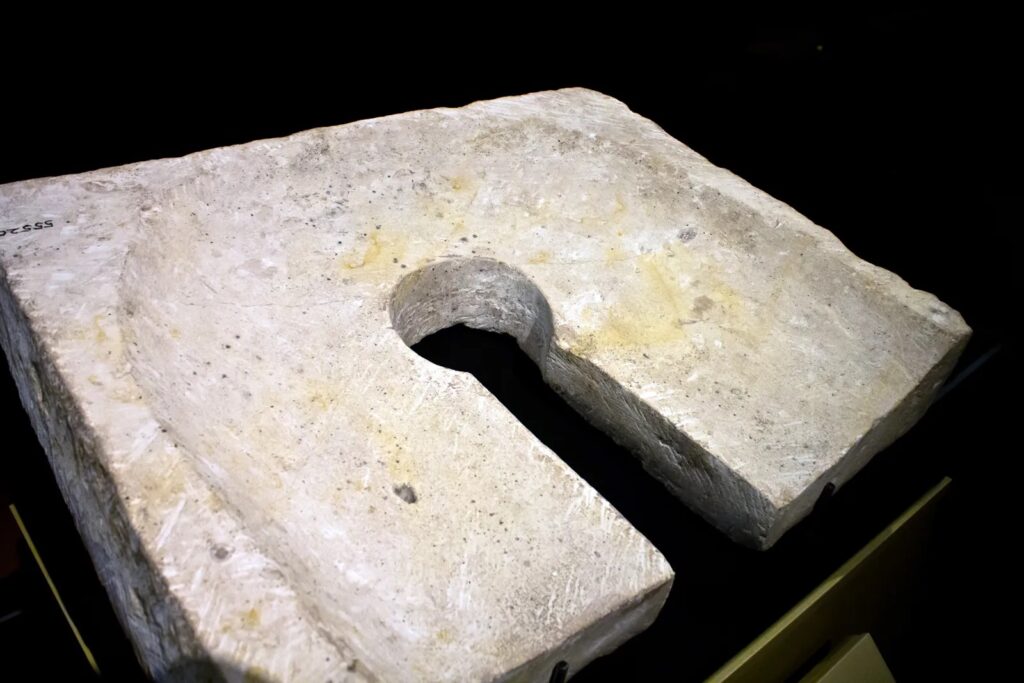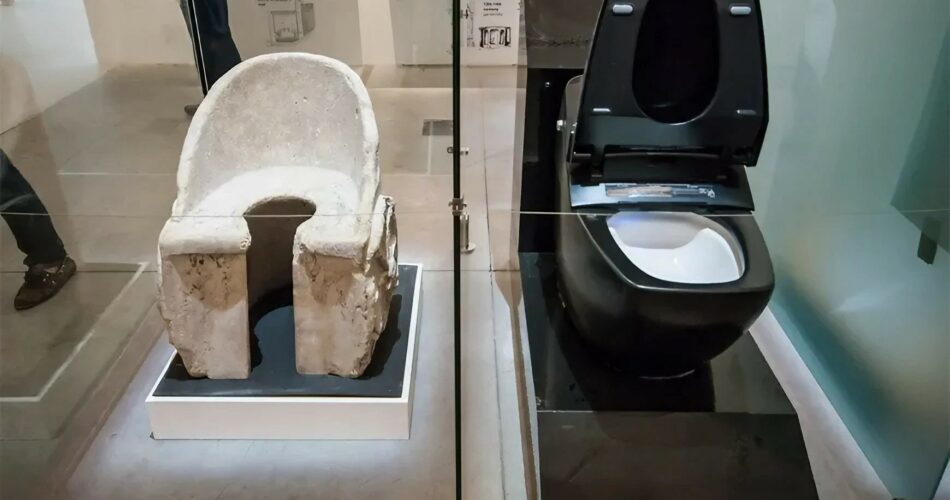From dirty streets to the first flush
The basic toilet has been around for many centuries. For instance, residents in ancient Egypt had access to simple indoor toilet facilities 5,000 years ago. Then, in the historic Pakistani city of Mohenjo-Daro, the first public sewage system in the world made its appearance some 2,500 years ago. The first flushing toilet in England, however, wasn’t put in place until 1449.
People have reportedly produced some of their best thoughts over the years while heeding the call of nature. In fact, according to this article, the father of the Protestant Reformation, Martin Luther, once wrote that he had been on the toilet when the concept of “salvation by faith alone” had suddenly struck him.
Below is a brief history of toilets.
Ancient facilities

Ancient Egypt began using bathroom facilities to distinguish between the rich and the poor over 5,000 years ago. An indication of great status was a toilet with a limestone top and a sand pit underneath. A wooden stool with a hole at the top was used by lower-class Egyptians.
The sewage system discovered in the Pakistani city of Mohenjo-Daro (Mound of the Dead Men) is said to be the oldest example of a sewage system ever discovered. Mohenjo-Daro had brick toilets over a sewage system that transported waste to a cesspit outside the city around 2500 BC. Archaeologists have even speculated that there may have been public restrooms there because the drains were brick-lined. About 1700 BC, the city was abruptly destroyed, wiping out all of its innovations.
Around the ninth century BC, the Roman Empire started to create both public toilets and sewer networks, spreading them throughout the empire. The Minoans on the island of Crete developed toilets that employed water to wash away waste. Officials could conduct their business as they performed their business in community restrooms with a dozen or more holes in the benches. But for the Romans, there was still no such thing as toilet paper. A xylospongium, a sponge on a stick that was rinsed and used again, was employed.
Medieval conveniences

The garderobe, which may be seen in castles, is arguably the most well-known medieval lavatory. Garderobes got their name since they were first used to store garments and linen because the ammonia kept pests and moths away. It was typically a small opening carved into the castle’s exterior wall, covered with a wooden plank with a round hole in it (which might lead to embarrassing splinters).
The waste was dumped into a pit that was specifically dug beneath the wall, a moat, or both. The nightmen, also known as gong farmers, would empty the hole on a regular basis. The waste that accumulated in cesspits in towns, cities, and castles was dug out and removed by the gong farmer. Garderobes at Porchester Castle were constructed over the water so that the tide worked as a huge, natural flushing system.
French soldiers climbed up via garderobes to breach the castle at Château Gaillard on the Norman frontier in 1204. Later that century, Guildford Castle installed metal grates over the chutes, possibly in response to what had happened at Château Gaillard.
Whittington’s Longhouse

Public restrooms were nothing new, but as populations rose, especially in big cities, they became more and more crucial. The pantomime’s Lord Mayor of London, Richard Whittington, who served as the model for Dick Whittington and his cat, was more interested in something other than seeing gold-paved streets in London. Whittington financed the construction of Whittington’s Longhouse, the first London public restroom with separate facilities for men and women, which opened on May 1, 1421 (either during his lifetime or through a bequest in his will).
Whittington also established an almshouse and was interested in expanding citywide access to clean water. There were 128 seats in the Longhouse, with 48 reserved for males and 48 for women. The waste was taken to a gully at the edge of the Thames by a brook, where it was then washed twice daily by the tide. It was situated on Walbrook Street. The Longhouse was still in use when it was destroyed by the Great Fire of London, but a new structure was erected in its stead and continued to be used until the early 20th century.
The Great Stink

The sanitary issue persisted. Thomas Brightfield appears to have erected the first flush toilet in England around 1449. It was made up of a stone privy, an overflow pipe, and a cistern for collecting rainwater.
John Harrington’s Metamorphosis of Ajax, published in 1596, was the first comprehensive design for a flushing toilet. It had a handle that could be turned to wash away the waste with water from a cistern, similar to Brightfield’s concept. Harrington put one in for Elizabeth I at Richmond Palace, but it remained a novelty because there wasn’t a sewer system to go with it.
The lack of facilities has been a problem for generations. There were issues, even in royal circles. For instance, there weren’t enough restrooms in Versailles Palace, so courtiers would relieve themselves in the nooks and crannies of rooms. The court of Charles II was notorious for leaving a mess everywhere they stayed, including in nooks, chimneys, coal sheds, and cellars.
The first publicly accessible flushing toilets with fees were introduced in 1851 at the Great Exhibition in London. During the exhibition, more than 650,000 people paid one penny to use the restrooms, obtain a towel, a comb, or even have their shoes shined.
The ‘Great Stink’ of the summer of 1858 was the most well-known incident that prompted a complete renovation of London’s sewage system and restrooms. The Thames was choked with enormous amounts of human waste, which, combined with the hot weather, raised major health concerns. When MPs were on the verge of leaving Westminster, the government decided to take action and expanded the city’s capacity to handle the waste it produced by 1,100 miles (1,800 km) of extra brick-lined sewers.
For a very long time, outside toilets predominated; it wasn’t until the second half of the 20th century that indoor toilets started to become more common.

